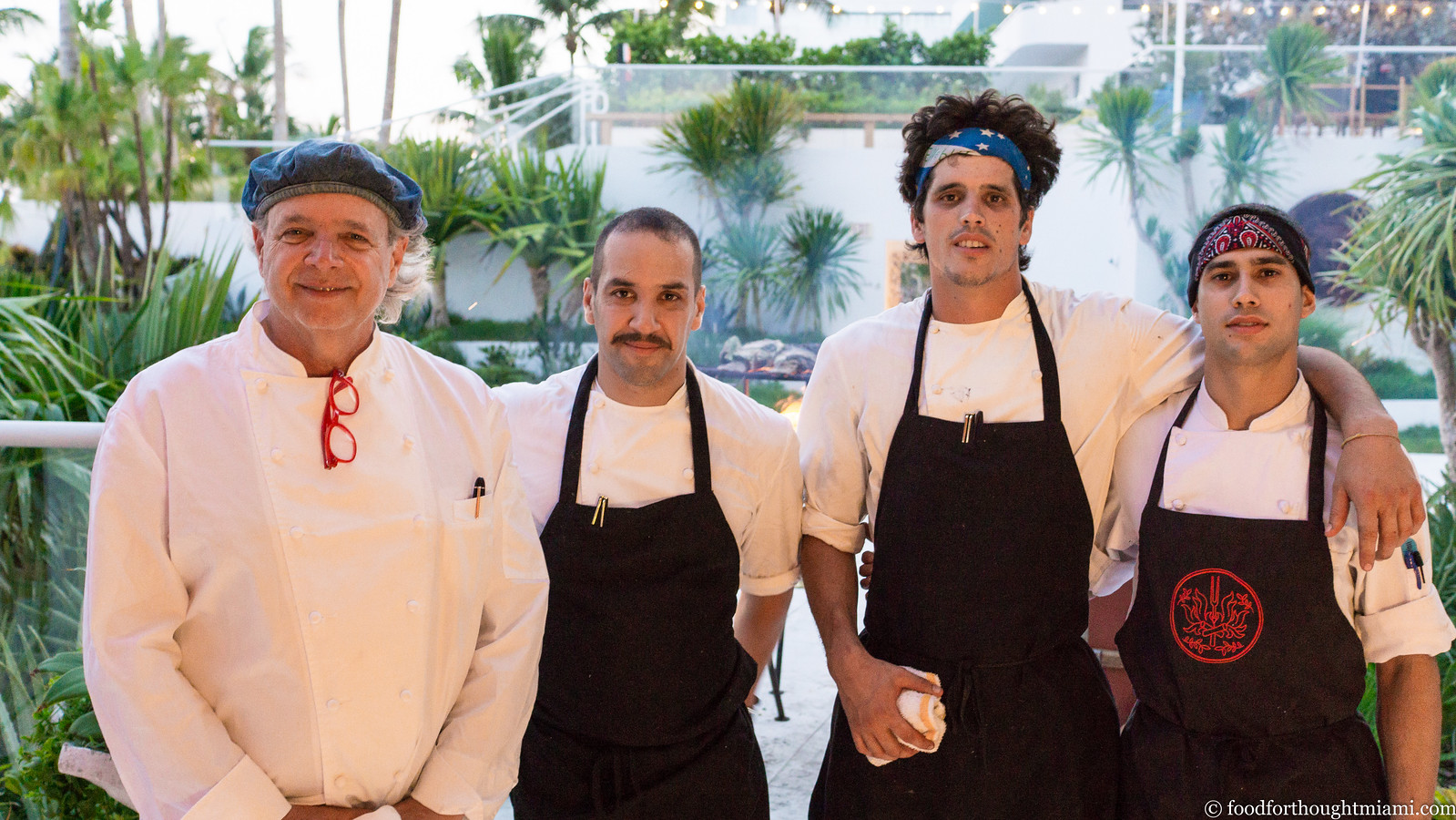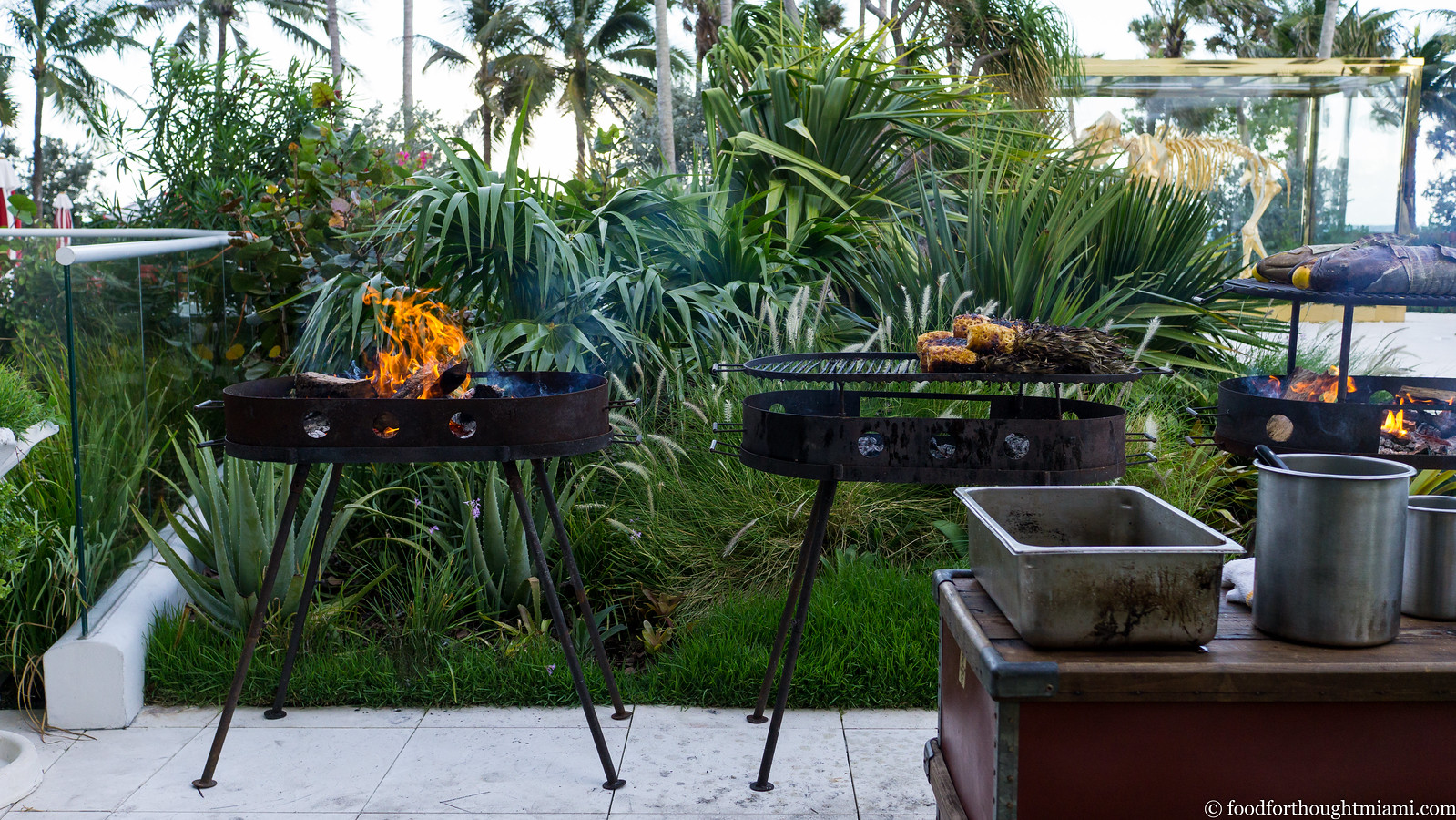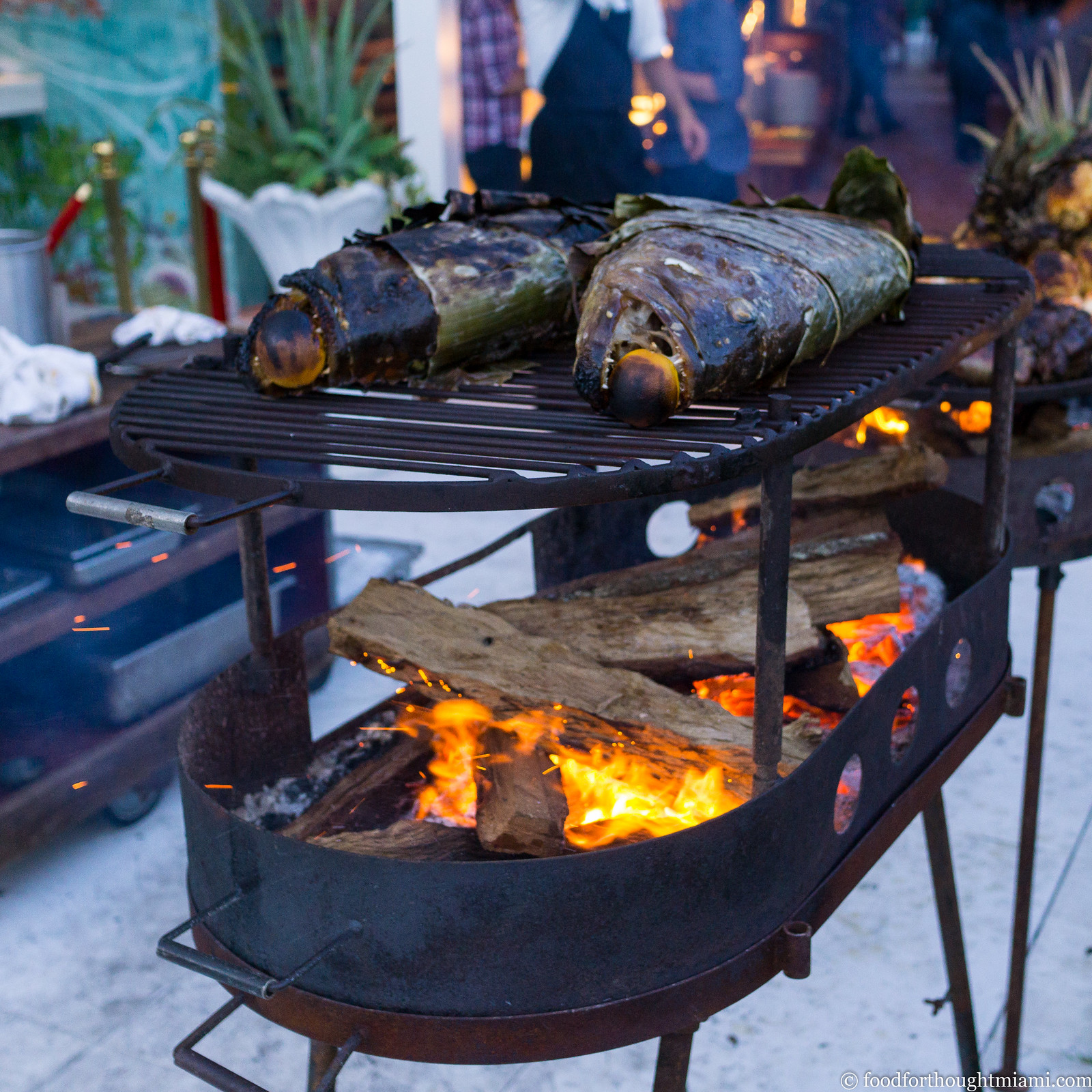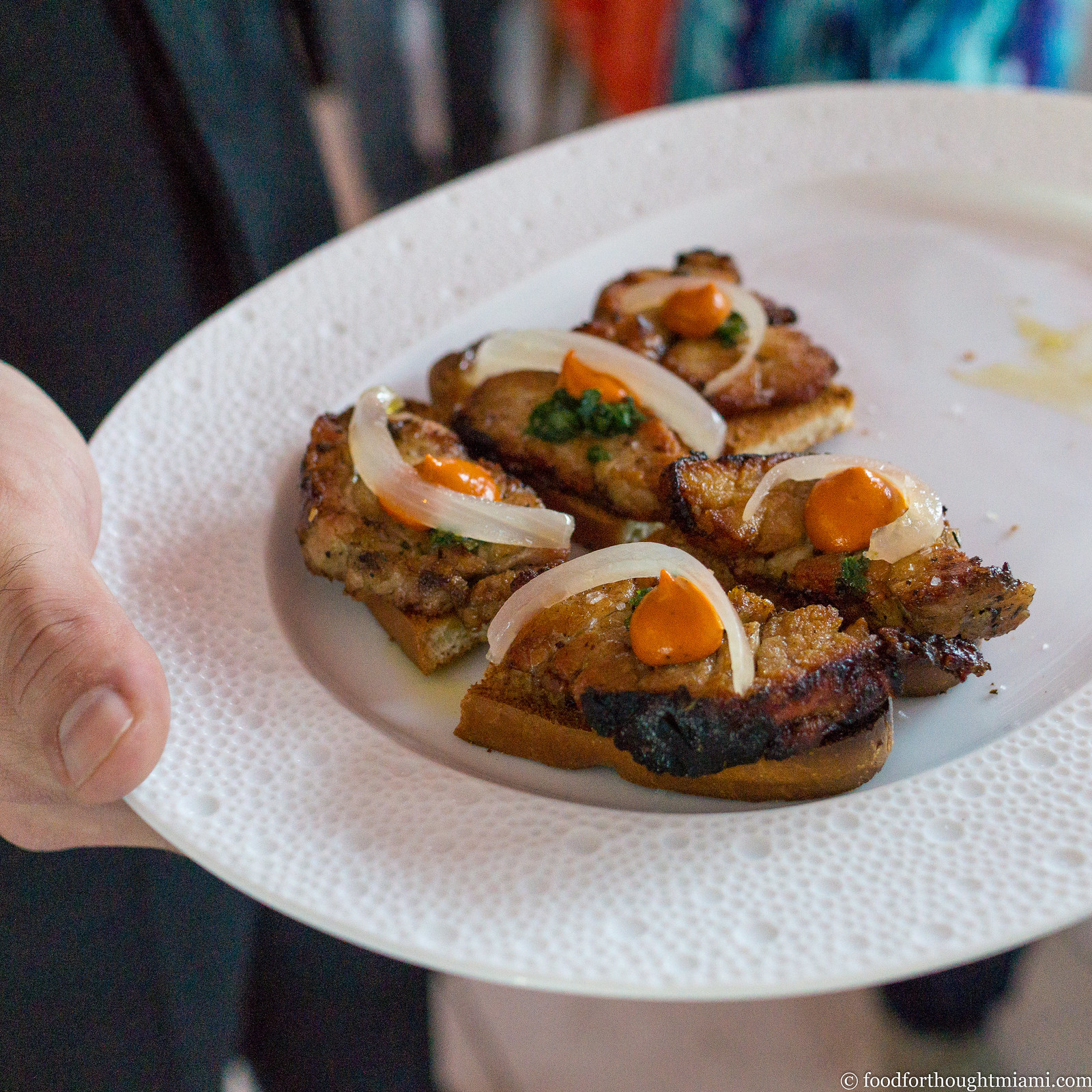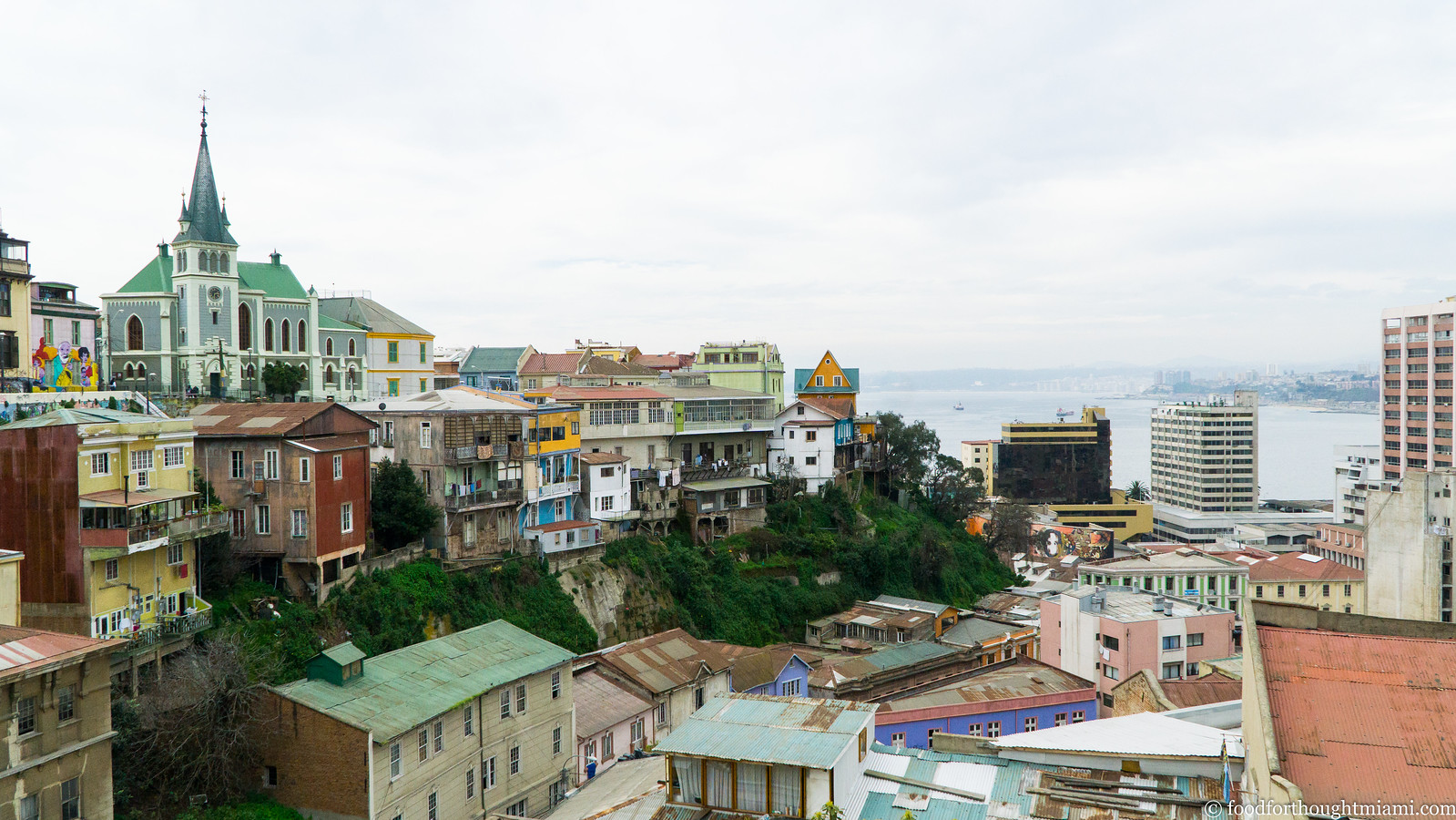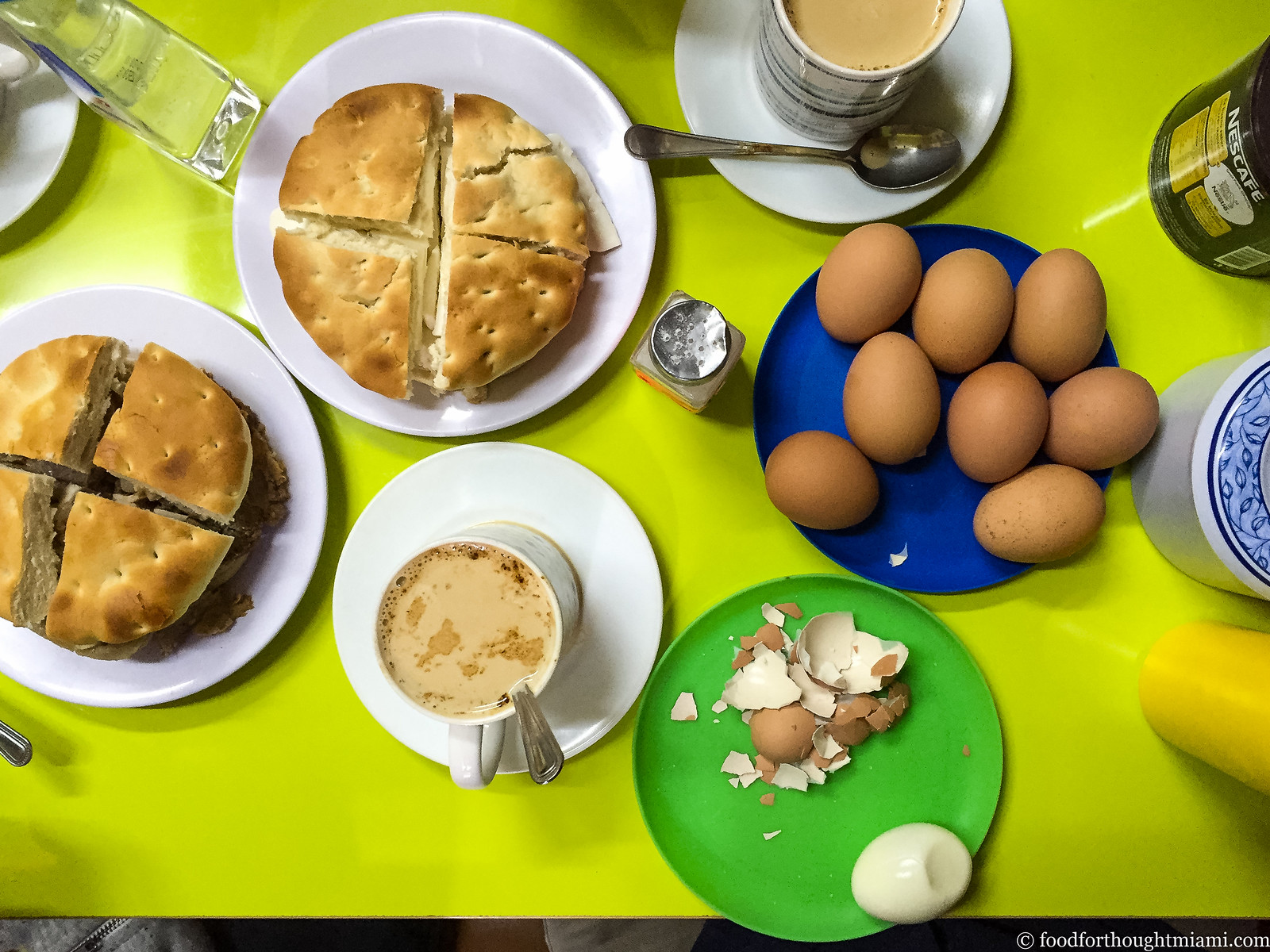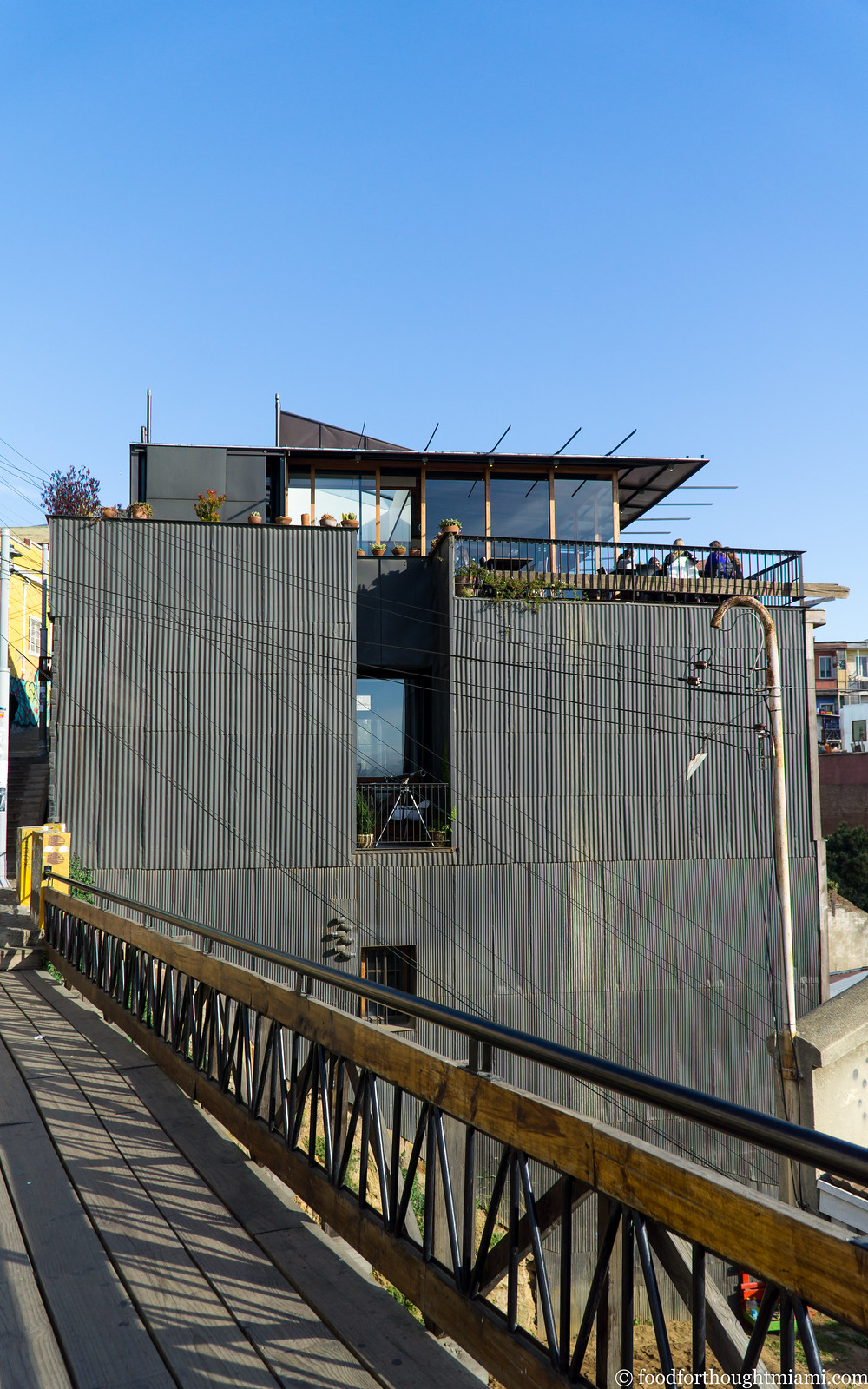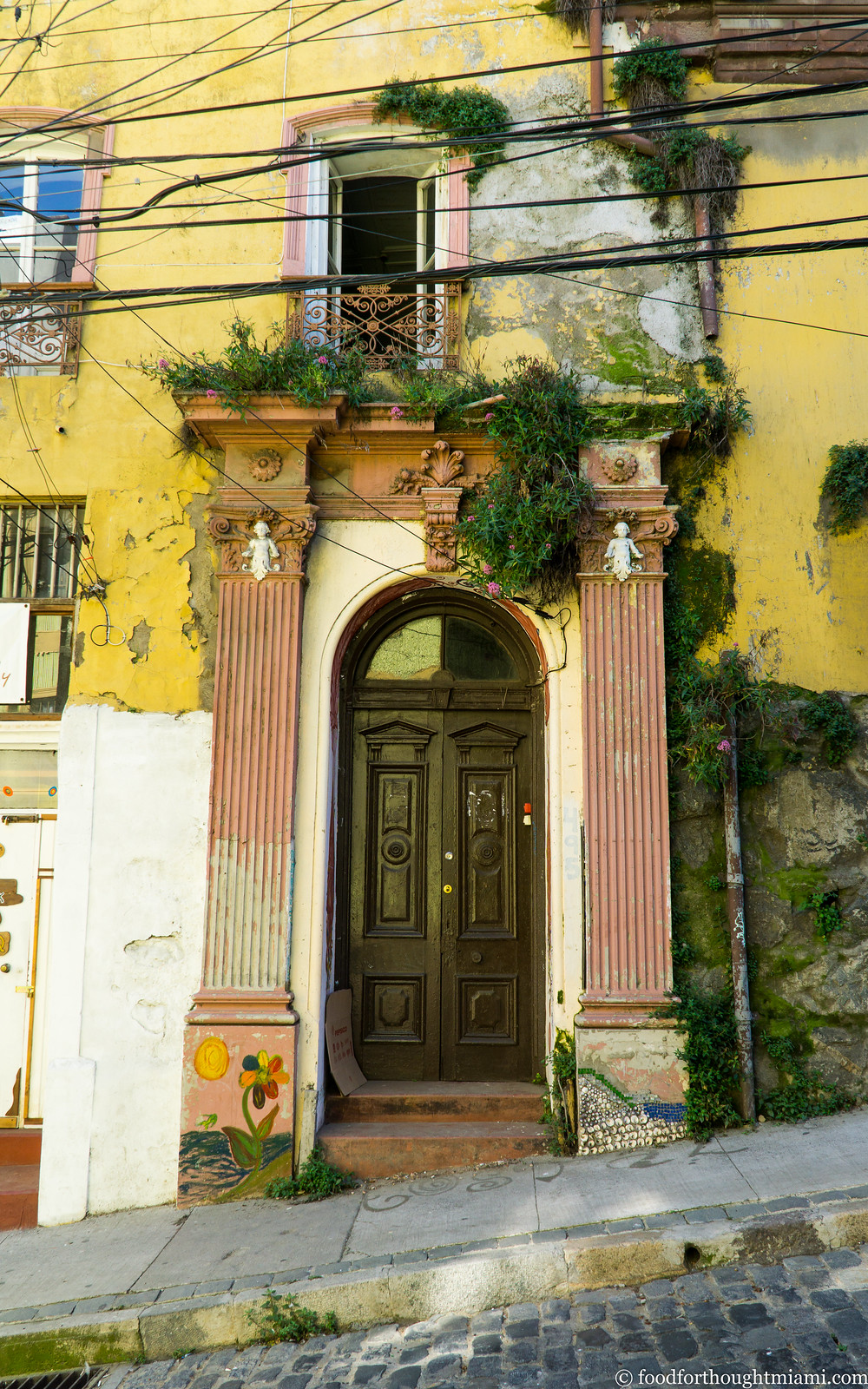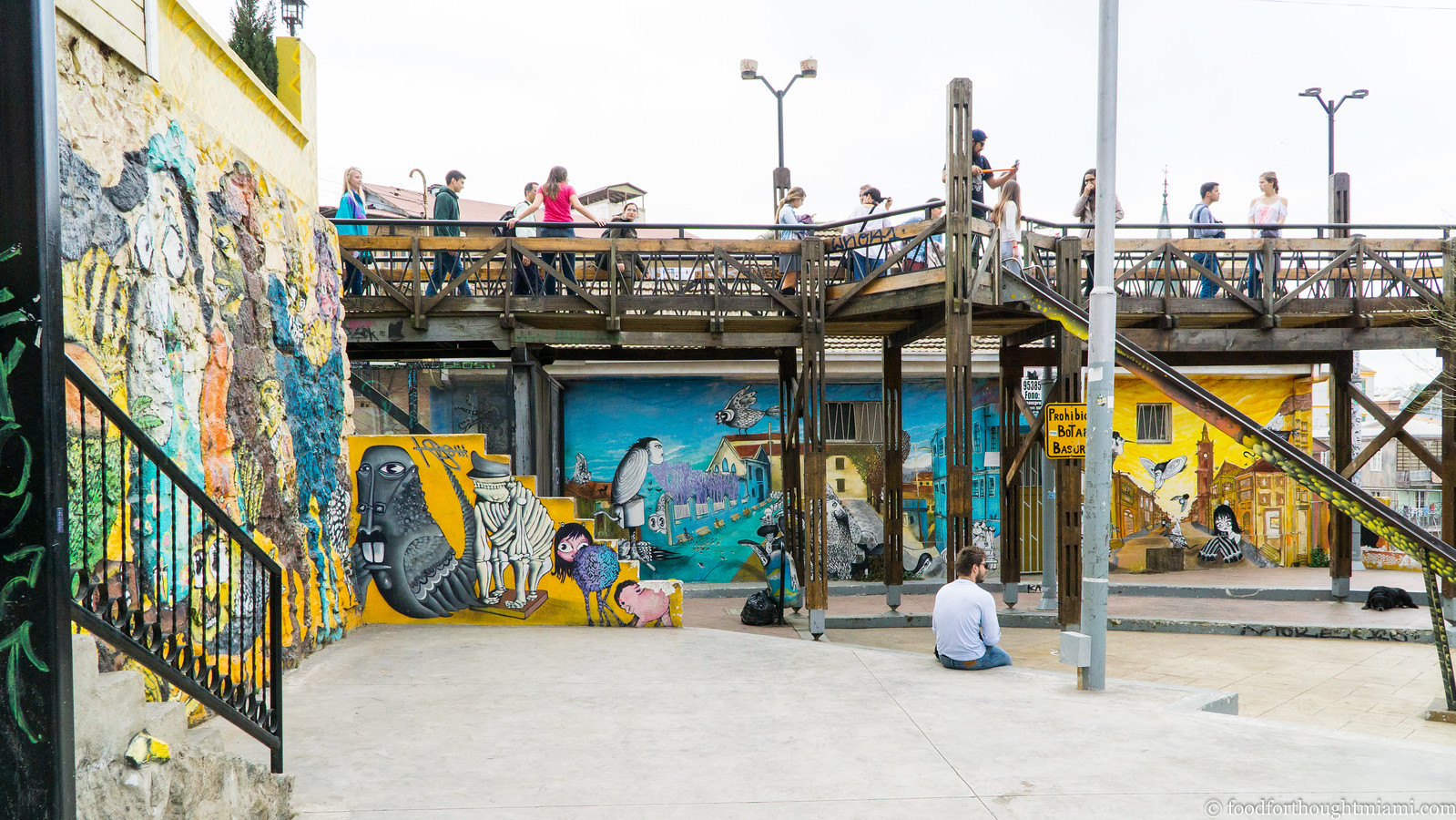I'm not sure I ever would have thought to go to Chile on my own. But Mrs. F had been in Santiago a couple years ago for something work-related, and came back raving about the bustling, cosmopolitan city surrounded by the Andes mountains. After doing some homework, I found plenty to get excited about too. We plotted a week-long trip when we'd have all the family together: a day on the Pacific coast in Valparaiso, a quick tour through Casablanca Valley wine country, a couple days in Santiago, wrapping up with a stay in the Atacama desert toward the north.
You probably know by now that the food usually plays a not-inconsequential role in my choice of travel destinations. But I didn't know much at all about Chilean cuisine. In fact, to be honest, I'd only heard of one restaurant in the entire country: Rodolfo Guzman's
Boragó, a high-end tasting-menu place that has drawn the attention of the
International Dining Mafia. Needless to say, this was entirely a function of my own ignorance: what I found was a country with a rich, complex and delicious culinary culture fueled by the incredible bounty of seafood from its extensive coast and a combination of pre-Columbian and colonial ingredients and influences, with a sense of history and tradition as well as creativity and playfulness.
Our red-eye flight to Santiago arrived around 6 a.m., and we'd arranged for a driver to take us to Valparaiso, about 1 ½ hours due west on the coast. About a half hour in, our driver Gustavo realized we needed a little sustenance. Near the town of Casablanca, he pulled into Caféteria Don Floro, a small, open-air roadside restaurant. Each of the formica booths was set with a plate of hard-boiled eggs and canisters of instant coffee. We peeled and salted eggs and sipped Nescafé café con leches as some pan hallulla, a dense, chewy, round bread, was toasted over a
charcoal brazier near our feet.
The
menu at Don Floro was comprised almost entirely of sandwiches – Chileans, it seems, eat sandwiches for breakfast, lunch and dinner – so we shared one stuffed with "arrollado de campo," a roll of pork bits wrapped in its skin, and another with "queso fresco de vaca soltero," fresh cheese made from the milk of a single cow. I'm not sure this place was any better or worse than any other roadside stand along the way between Santiago and Valparaiso, but Gustavo clearly had an opinion on such matters, as he drove by several other places before stopping here, and our breakfast validated his judgment. We were groggy, and hungry, and this really hit the spot.
(A few more pictures in this
Caféteria Don Floro flickr set).
Appropriately fortified, we made it to Valparaiso without incident, where we checked into the
Fauna Hotel, a clean-lined, modern property which is actually a refurbishment of two old buildings that date back to the 1870's.
[1] The hotel was both stylish and comfortable, and its setting offered a fantastic vantage point (the picture at the top of this post was taken from the window of our room), while also being centrally located for exploring the town. Valparaiso is a city of hills, and the Fauna sits atop of one of them – Cerro Alegre – across from a funicular station at its summit, at the end of a pedestrians-only street.
(Some more pictures in this
Fauna Hotel flickr set).
Fauna Hotel
Pasaje Dimalow #166, Cerro Alegre, Valparaiso, Chile
+56 32 3270719
Like Cartagena, Colombia, which
we visited earlier this year, Valparaiso's historic quarter has been designated a
UNESCO World Heritage Site. And it's easy to see why: the twisting streets, steep hills, and colorful buildings (many of which date back to the 19th century), all overlooking the Pacific ocean, are incredibly picturesque and charming, and also a great example of urban adaptation to a tricky geography. But what was truly fascinating to me about the town was the confluence of the historical and the contemporary. It is no exaggeration to say that virtually every available surface of the city is covered in street art; some of it amateurish, but the bulk of it really skilled and much of it quite beautiful. What at first blush as we drove into town seemed signs of urban blight were actually just the opposite.
[2]
We spent the day just wandering around town, up and down the hills, seeing colorful buildings and murals everywhere, occasionally catching a glimpse of the ocean. Often, we were accompanied by one of the friendly dogs that roam the streets throughout Chile.
[3] A visit to the
Palacio Baburizza, the 1916 Italian-style mansion of a Croatian businessman which has been made into a museum, was a nice little pit-stop. We had lunch at
Café Vinilo, whose modest exterior belied a surprisingly ambitious menu including some excellent crab empanadas, a rockfish ceviche spiked with fresh ginger and mint, and an open-faced sandwich topped with creamy blood sausage and a fried egg.
(Some more pictures from around the city are in this
Valparaiso, Chile flickr set).
(continued ...)
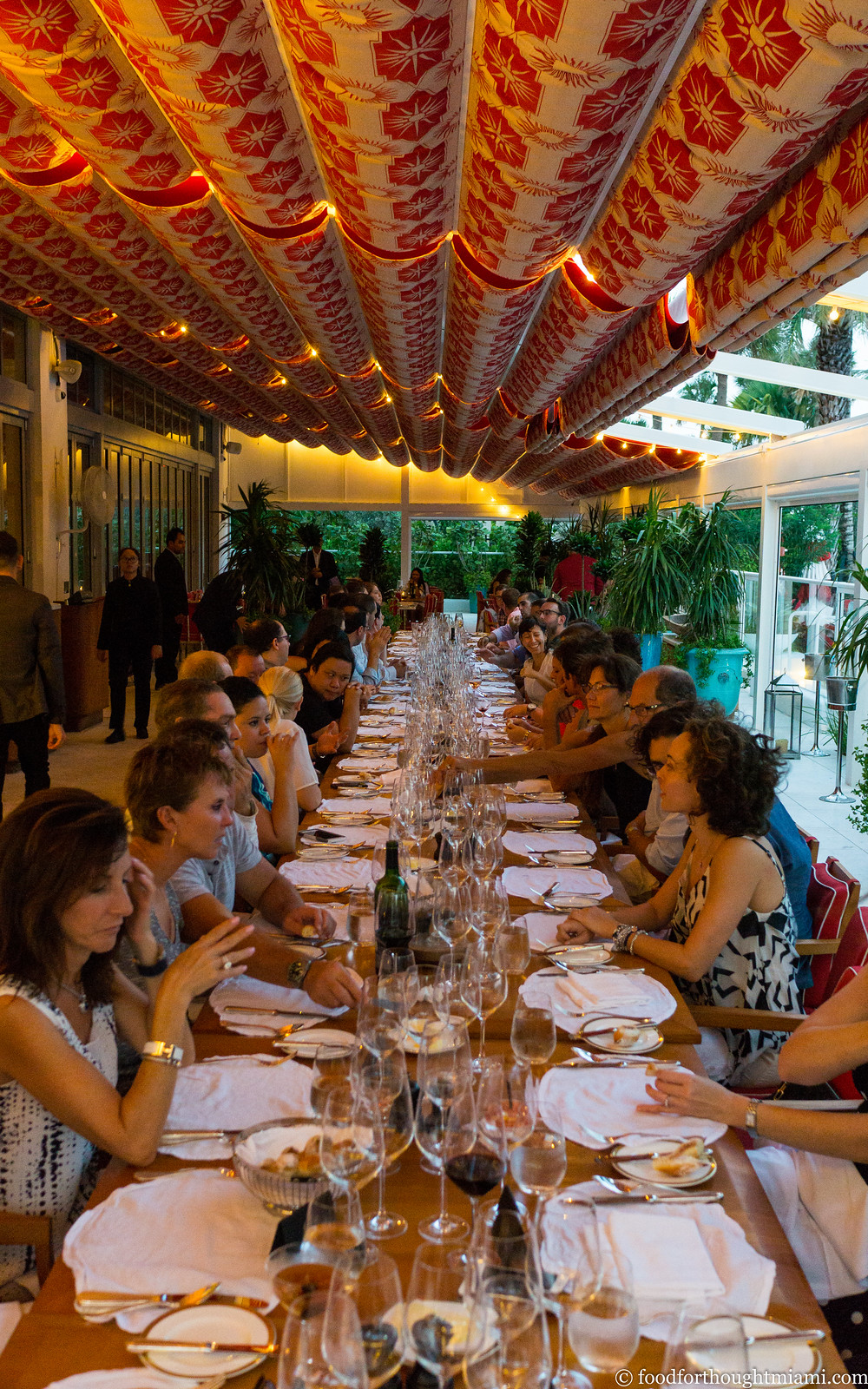 I remain forever loyal to any sweetbread preparation Michelle Bernstein does, but Mallmann's mollejas will run a close second. Sliced fairly thin and aggressively seared on the grill until the edges were charred to almost black, these sweetbreads were served over toasted bread daubed with a creamy pepper purée and topped with a sliver of pickled onion.
I remain forever loyal to any sweetbread preparation Michelle Bernstein does, but Mallmann's mollejas will run a close second. Sliced fairly thin and aggressively seared on the grill until the edges were charred to almost black, these sweetbreads were served over toasted bread daubed with a creamy pepper purée and topped with a sliver of pickled onion.
